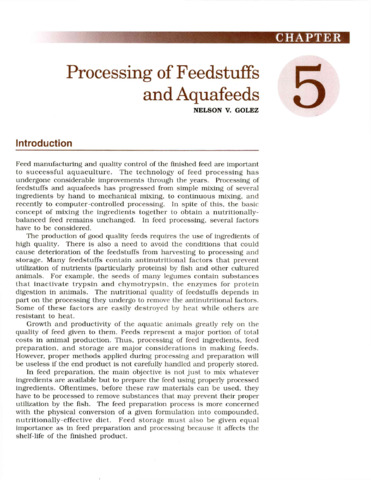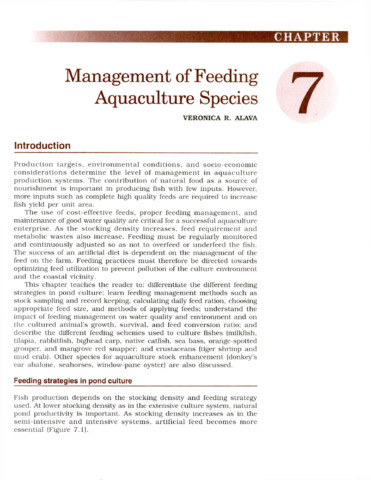Aquafeed development and utilization of alternative dietary ingredients in aquaculture feed formulations in Indonesia
- Global styles
- MLA
- Vancouver
- Elsevier - Harvard
- APA
- Help
Share
Abstract
Fish production from aquaculture in Indonesia continues to grow rapidly from 1.7 million mt in 2009 to 4.0 million mt (excluding seaweed) in 2013. This is consistent with the increase of total aqua feed production from 995,000 mt in 2009 to 1.42 million mt in 2013 and about 90% of feed distributed to the farming area is produced by the feed industry. To meet the demand from the rapidly growing aquaculture industry, there is a need to develop new high-quality protein ingredients to reduce dependence on fish meal (FM). Despite high production of local FM in Indonesia, only around 5% of total production is used for aquafeed and the rest is exported mainly to Japan. Efforts toward reduction of using FM in commercial diets have been done in particular for freshwater species. Nowadays the content of FM in commercial diet for freshwater species is around 5-11%. Shrimp and marine species are still formulated to contain FM in range of 20-30% for shrimp and > 30% for marine species.Utilization of plant ingredients in particular soy bean meal (SBM) has partially replaced FM as dietary protein. However, SBM is also obtained entirely by import as all national production of soybean in the country are for tempe and tofu processing. Since almost 70% of components in commercial diet is imported ingredients, prices of commercial aquafeed increased through the years and are not competitive compared with price of fish in particular those categorized as low value species like carp, tilapia, catfish, Pangasius and milkfish. In several areas in Indonesia including Sumatera and Kalimantan Island, small-scale feed industry or on-farm feed making has been developed by individual or farmer group due to the limited access to commercial diets. Generally, the farmers use local feed ingredients which are available in their areas such as local fish meal, copra/palm cake meal, rice bran and tapioca. However, the quality of the diets produced varies among groups. Many nutritional studies have been conducted to find alternative protein sources. Local animal sources including shrimp head meal, blood meal, golden snail and vermi meal can be included in diet at rate of 8-30% for grouper species. The use of plant ingredients has been extensively evaluated particularly on herbivorous and omnivorous species to develop least-cost diet formulation. Plant ingredients containing > 20% protein such as copra cake meal, rubber seed, Leucaena leaf, and aquatic weed could be used in diet at different levels from 10-60% depending on the species. The presence of anti-nutritional compounds in plant ingredients is the main constraint in their use in aquafeed. Bio-processing using proper microorganism has been developed to improve their quality. More focus and in-depth research to minimize the negative effects of anti-nutritional compounds and to develop technique of their mass production are recommended.
Suggested Citation
Laining, A., & Kristanto, A. H. (2015). Aquafeed development and utilization of alternative dietary ingredients in aquaculture feed formulations in Indonesia. In M. R. Catacutan, R. M. Coloso, & B. O. Acosta (Eds.), Development and Use of Alternative Dietary Ingredients or Fish Meal Substitutes in Aquaculture Feed Formulation : Proceedings of the ASEAN Regional Technical Consultation on Development and Use of Alternative Dietary Ingredients or Fish Meal Substitutes in Aquaculture Feed Formulation, 9-11 December 2014, Nay Pyi Taw, Myanmar (pp. 3-13). Tigbauan, Iloilo, Philippines: Aquaculture Department, Southeast Asian Fisheries Development Center.
Type
Conference paperISBN
9789719931058
Related items
Showing items related by title, author, creator and subject.
-
Processing of feedstuffs and aquafeeds
Golez, Nelson V. (Aquaculture Department, Southeast Asian Fisheries Development Center, 2002)This chapter will help the reader understand and appreciate the basic principles of processing, preparation, storage, and quality control in the preparation of aquafeeds. The material in this section is presented in sequence ... -
Management of feeding aquaculture species
Alava, Veronica R. (Aquaculture Department, Southeast Asian Fisheries Development Center, 2002)This chapter teaches the reader to: differentiate the different feeding strategies in pond culture; learn feeding management methods such as stock sampling and record keeping, calculating daily feed ration, choosing ... -
Development and use of alternative ingredients or fish meal substitutes in aquaculture feed formulation: Proceedings of the ASEAN Regional Technical Consultation on Development and Use of Alternative Dietary Ingredients or Fish Meal Substitutes in Aquaculture Feed Formulation
Catacutan, Mae R.; Coloso, Relicardo M.; Acosta, Belen O. (Aquaculture Department, Southeast Asian Fisheries Development Center, 2015)Recognizing the need for a concerted effort to follow-up on this priority issue of the ASEAN on aquaculture feed development and utilization. SEAFDEC (Aquaculture Department and Secretariat) and the Government of Myanmar ...






